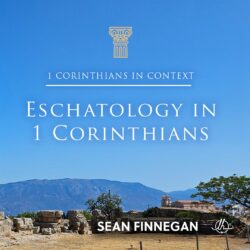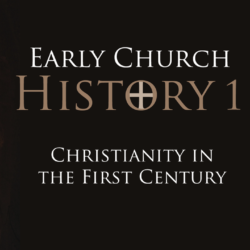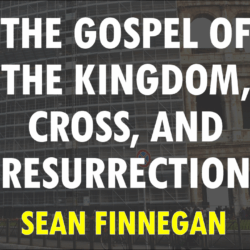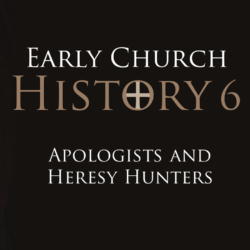Listen to this episode on Spotify or Apple Podcasts
This is part 5 of the Why Christianity class.
How would you go about convincing someone that the resurrection of Jesus actually happened? Now, what if that person didn’t recognize the scriptures as inspired by God. How would you go about making a case for Jesus’ resurrection in that kind of scenario? In this presentation, you learn four key pieces of historical evidence for the resurrection of Jesus, including (1) the honorable burial, (2) the empty tomb, (3) appearances, and (4) resurrection belief. You’ll also become familiar with competing theories and how to respond to them.
—— Links ——
- See other episodes of Why Christianity
- More episodes about defending your faith here
- Join our Restitutio Facebook Group and follow us on Twitter @RestitutioSF
- If you’d like to support Restitutio, you can donate here or designate Restitutio as your charity of choice for Amazon purchases
- Leave a voice message via SpeakPipe with questions or comments
- Intro music: Good Vibes by MBB Attribution-ShareAlike 3.0 Unported (CC BY-SA 3.0) Free Download / Stream: Music promoted by Audio Library
—— Notes ——
Honorable Burial
—————–
1. multiple, early, independent sources say he was buried in a known marked tomb (1 Cor. 15.4, Mark 15.46, John 19.42)
2. Joseph of Arimathea is unlikely to be a Christian invention since he is not one of the disciples, but a member of the Sanhedrin, the very body that condemned Jesus
3. no competing burial story exists (even enemies never claimed a common grave or that Joseph’s grave was inaccurate)
Empty Tomb
———–
1. several independent sources attest to empty tomb (Mark 16.6, Luke 24.5/Acts 13.29-31, John 20.2)
2. a movement founded on Jesus’ resurrection could not get far if his body was still in a known tomb…otherwise early opponents could just bring Jesus’ corpse out disproving resurrection
3. that women first discovered the empty tomb is unlikely a Christian invention since Josephus tells us women weren’t even allowed to serve as legal witnesses in a court of law
4. the Gospels lack marks of legendary development and theologizing in the resurrection narratives (cp. to Gospel of Peter)
5. the earliest Jewish polemic, “His disciples came by night and stole him away while we were asleep” (Matthew 28.13) presupposes an empty tomb
Appearances
———–
1. the early creed of 1 Cor. 15.3-7 contains a list of eyewitnesses
2. the Gospel appearance narratives contain earmarks of eyewitness testimony and their divergences exclude the possibility of collusion
3. that the disciples failed to anticipate or believe in Jesus’ resurrection even after they found out about the empty tomb is unlikely to be a Christian invention
4. James & Paul both did not believe in Jesus as Messiah, but became leaders in the church after they claimed they saw him
Resurrection Belief
——————–
1. belief that God raised Jesus from the dead is unlikely to be a Christian invention because it diverged from expectations
2. the disciples so strongly believed in Jesus’ resurrection that they were willing to die for it even though they knew if it was true or not
3. without a resurrection belief it’s impossible to explain how a Jewish sect could launch a faith in a crucified messiah
4. the disciples lack motives to lie about the resurrection (they didn’t get money, women, power, protection, or fame w/in their lifetimes)







Enjoying this thoughtful series Sean. In addition to the resurrection of Christ, I think often overlooked is Matt 27:52:The tombs broke open, and the bodies of many saints who had fallen asleep were raised. 53After Jesus’ resurrection, when they had come out of the tombs, they entered the holy city and appeared to many people.
I am curious if you have any knowledge of other historical information regarding the “many saints” as I would imagine that would be a significant event that occurred. Interestingly, it only appears in the gospel of Matthew. I’ve often wondered if those “many saints” likely Jewish were those referred to in Romans 8:28-30. They were foreknown (previously known by God), called, justified (after the death of Jesus) and glorified (glorified bodies). They fit the description for sure.
Thanks for sharing your thoughts.
Good question!
Hey Sean!
Been enjoying the class thus far. While not related to this episode, or any particularly, I thought it might be useful to let the listeners know if they want to support Restitutio without even having to use any of their own funds, that the ministry is listed on AmazonSmile. Been a listener for a while now and just stumbled upon that by chance recently. Keep up the good work!
Hey BereanThinker,
Thanks for the suggestion! We’ve just set up Restitutio on Amazon Smile. Here’s the link.